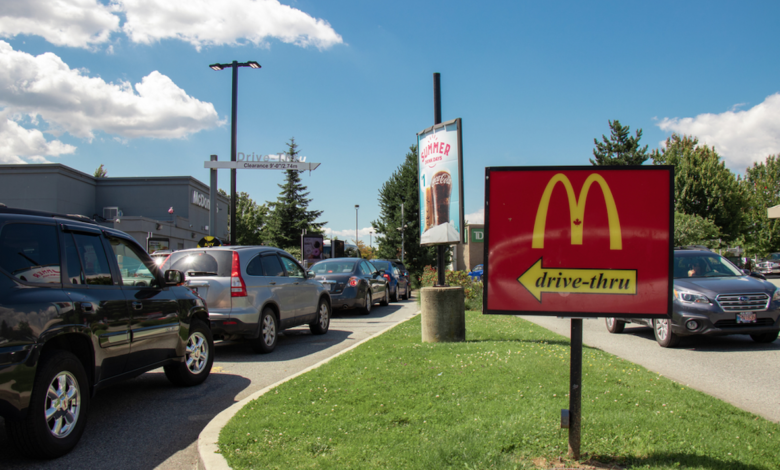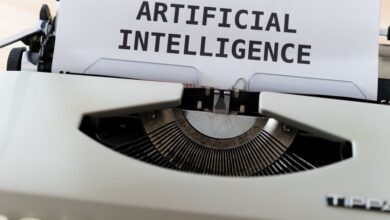McDonald’s Stops Drive-Thru AI Chatbot Tests for Now

After two years of testing, McDonald’s has ended its partnership with IBM to develop an artificial intelligence (AI)-powered drive-thru system. The collaboration, which aimed to change the fast-food ordering process by replacing human workers with voice-activated chatbots, had been a closely watched experiment in the industry.
The fast-food giant’s decision to remove the technology from over 100 restaurants and seek a new partner underscores the challenges and opportunities presented by AI-powered voice ordering systems, Restaurant Business reported, citing an email to franchisees. As the restaurant industry grapples with labor shortages and seeks to streamline operations, AI voice ordering has emerged as a potential solution.
The decision to halt the program was confirmed to PYMNTS by a McDonald’s spokesperson.
“Through our partnership with IBM, we have captured many learnings and feel there is an opportunity to explore voice ordering solutions more broadly,” the spokesperson told PYMNTS. “After thoughtful review, McDonald’s has decided to end our current global partnership with IBM on AOT beyond this year. IBM remains a trusted partner and we will still utilize many of their products across our global System.”
Voice Ordering Here to Stay
The McDonald’s spokesperson said a voice ordering solution for drive thru will be “part of our restaurants’ future” and added, “We see tremendous opportunity in advancing our restaurant technology and will continue to evaluate long-term, scalable solutions that will help us make an informed decision on a future voice ordering solution by the end of the year.”
Voice ordering is gaining traction among consumers, with many viewing it as a convenient alternative to touchscreens.
According to the PYMNTS study, “How Consumers Want To Live In The Voice Economy,,” nearly 40% of consumers believe voice recognition technology will be as advanced as human conversation within five years; currently, 63% say they would use voice if it were as capable as a person, 58% because it is easier and more convenient, and 54% because it is faster than typing or using a touchscreen.
Several fast-food chains, including Checkers & Rally’s Restaurants Inc., CKE Restaurants Holdings Inc.’s Hardee’s and Carl’s Jr., and Wendy’s Co., are testing or have implemented similar technology in their drive-thrus. Yum Brands, parent company of Taco Bell, Pizza Hut, KFC and The Habit Burger Grill, plans to integrate AI across its restaurant operations, having increased its investment in digital, technology, and innovation to $21 million in 2023, up from $11 million the previous year, according to The Wall Street Journal.
The test, which began in 2021 following McDonald’s sale of its McD Tech Labs to IBM, sought to determine if automated voice ordering could speed service and simplify operations. IBM, which is in talks with other fast-food chains to deploy the technology, said it developed automated order-taking capabilities with McDonald’s that are “proven to have some of the most comprehensive capabilities in the industry, fast and accurate in some of the most demanding conditions.”
Google Cloud Solution for McD
McDonald’s aims to find a new partner for its automated ordering efforts. According to an email viewed by Restaurant Business, Chief Restaurant Officer Mason Smoot said McDonald’s sees “an opportunity to explore voice ordering solutions more broadly.”
In December, McDonald’s announced a partnership with Google to implement generative AI solutions across its restaurants, signaling a tech-driven future for the fast-food giant. As part of that partnership, McDonald’s will introduce upgrades to its restaurant and customer platforms, including enhancements to its mobile app, which supports its rapidly growing 150-million-member loyalty program, and improvements to its thousands of self-service kiosks worldwide. Utilizing Google Cloud’s edge computing, McDonald’s aims to implement these innovations more swiftly and efficiently by bringing high-powered computing and data storage directly to individual restaurants.
Google Distributed Cloud, a combination of hardware and software, will be installed in thousands of McDonald’s locations, allowing them to use both cloud-based applications and localized AI solutions.
“We see tremendous opportunity for growth in our digital business and our partnership with Google Cloud allows us to capitalize on this by leveraging our size and scale to build capabilities and implement solutions at unmatched speeds,” McDonald’s Executive Vice President and Global Chief Information Officer Brian Rice said in a news release. “Connecting our restaurants worldwide to millions of datapoints across our digital ecosystem means tools get sharper, models get smarter, restaurants become easier to operate, and most importantly, the overall experience for our customers and crew gets even better.”



